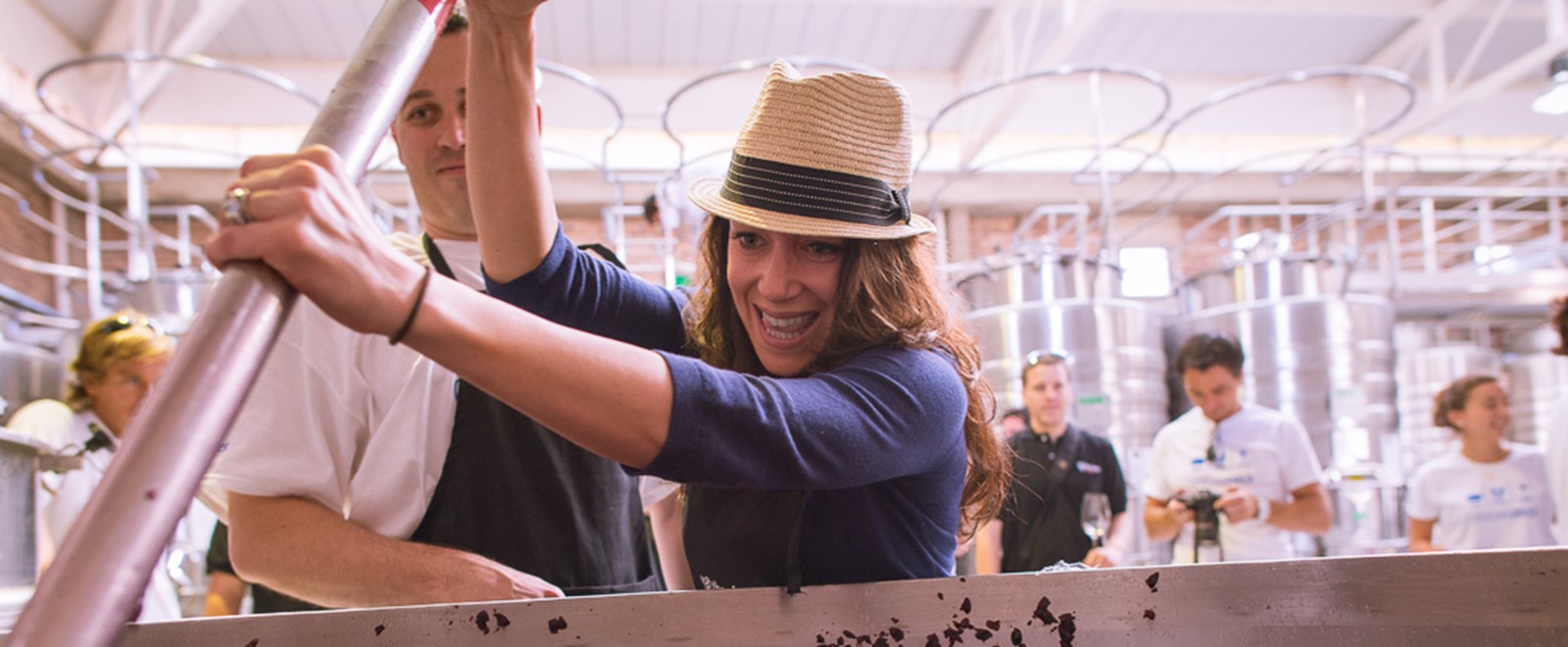 This week at Winemaker’s Night we were treated to a little break from Malbec with the lovely wines from Bodega Andeluna. Winemaker …. Joined us to explain a bit about his process and the history of this mid-sized but growing winery in Tupungato. In 2003 two families came together, the Ward Lay family (as in Frito-Lay!) from the U.S. and the Rutinis, a well-known Argentine winemaking family. The seventeen year-old estate vineyards are located at 1300 meters in the Uco Valley. >>>> explains that his wines are “made in the vineyards”, by controlling yields and choosing the best fruit. We began with the 2010 Torrontes, a light-bodied white with a floral finish that won a bronze medal in the Decanter World Wine Awards. >>> described how he uses selected yeasts in the Torrontes to maintain fruity flavors and prefers to quickly ferment this white to preserve freshness in the wine. From there we moved to the 2006 Reserva Chardonnay, a toasty, full-bodied white. With a bit of age, this wine is showing aromas of toasted hazelnut, dried apricot and pineapple and vanilla. Perfect to drink right now. Throughout the course of the evening the topic of manual versus machine harvest came up. >>. was the first winemaker I've heard say that they use both manual and machine harvest in the vineyards. ??? explained that in the past, mechanical harvesters were poorly made and were likely to damage the grapes in the process. Nowadays, however, high quality harvesting machines are available at the same time that it has become more difficult to find workers for manual harvest. Of course, manual harvest is always preferred for the high-end line, Andeluna uses manual harvest for the reserve line and mechanical harvesters for the classic line. We tasted two Merlots that night, and so the discussion turned to the popularity of the grape and the reintroduction of Merlot into the U.S. market. In recent years (perhaps as an effect of the movie Sideways, which degraded Merlot in favor of praising Pinot Noir), sales of Merlot in the U.S. have decreased significantly. I know from tasting many Californian and Washington wines, that Merlot can often be bland and boring, lacking depth and concentration. Andeluna's take is that Merlot can be interesting and complex and still be affordable. The entry level Merlot goes for $11 USD while the reserve goes for $20 USD. The 2010 Classic Merlot has a remarkably concentrated violet color for the varietal, with rosey aromas, red cherry fruit and marked toast on the palate.
This week at Winemaker’s Night we were treated to a little break from Malbec with the lovely wines from Bodega Andeluna. Winemaker …. Joined us to explain a bit about his process and the history of this mid-sized but growing winery in Tupungato. In 2003 two families came together, the Ward Lay family (as in Frito-Lay!) from the U.S. and the Rutinis, a well-known Argentine winemaking family. The seventeen year-old estate vineyards are located at 1300 meters in the Uco Valley. >>>> explains that his wines are “made in the vineyards”, by controlling yields and choosing the best fruit. We began with the 2010 Torrontes, a light-bodied white with a floral finish that won a bronze medal in the Decanter World Wine Awards. >>> described how he uses selected yeasts in the Torrontes to maintain fruity flavors and prefers to quickly ferment this white to preserve freshness in the wine. From there we moved to the 2006 Reserva Chardonnay, a toasty, full-bodied white. With a bit of age, this wine is showing aromas of toasted hazelnut, dried apricot and pineapple and vanilla. Perfect to drink right now. Throughout the course of the evening the topic of manual versus machine harvest came up. >>. was the first winemaker I've heard say that they use both manual and machine harvest in the vineyards. ??? explained that in the past, mechanical harvesters were poorly made and were likely to damage the grapes in the process. Nowadays, however, high quality harvesting machines are available at the same time that it has become more difficult to find workers for manual harvest. Of course, manual harvest is always preferred for the high-end line, Andeluna uses manual harvest for the reserve line and mechanical harvesters for the classic line. We tasted two Merlots that night, and so the discussion turned to the popularity of the grape and the reintroduction of Merlot into the U.S. market. In recent years (perhaps as an effect of the movie Sideways, which degraded Merlot in favor of praising Pinot Noir), sales of Merlot in the U.S. have decreased significantly. I know from tasting many Californian and Washington wines, that Merlot can often be bland and boring, lacking depth and concentration. Andeluna's take is that Merlot can be interesting and complex and still be affordable. The entry level Merlot goes for $11 USD while the reserve goes for $20 USD. The 2010 Classic Merlot has a remarkably concentrated violet color for the varietal, with rosey aromas, red cherry fruit and marked toast on the palate.

The Vines of Mendoza
Bodega Andeluna at Winemaker's Night
·
